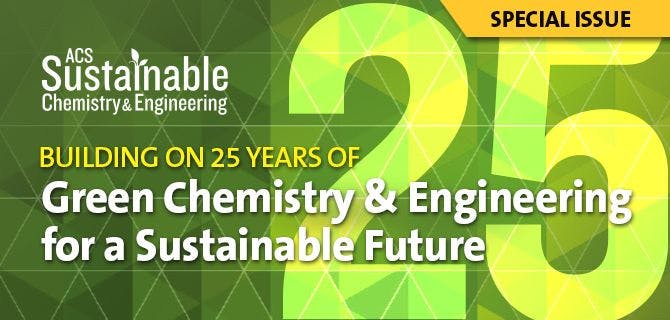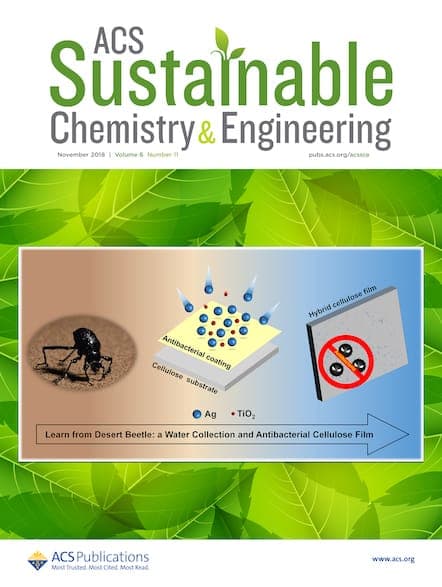This editorial originally appeared in ACS Sustainable Chemistry & Engineering, as part of the “Building on 25 Years of Green Chemistry and Engineering for a Sustainable Future” special issue. Reflecting on a quarter century of advances in the fields of Green Chemistry and Green Engineering, the strong scientific foundation that has been built is worthy […]

This editorial originally appeared in ACS Sustainable Chemistry & Engineering, as part of the “Building on 25 Years of Green Chemistry and Engineering for a Sustainable Future” special issue.
Reflecting on a quarter century of advances in the fields of Green Chemistry and Green Engineering, the strong scientific foundation that has been built is worthy of celebration. Innumerable green products and processes have been commercialized, with more than 100 of these scientific and technological advances recognized in the United States with Presidential Green Chemistry Challenge Awards. Other innovations have been honored by similar awards in many other nations. As documented in ACS Sustainable Chemistry & Engineering, and other journals serving the field, the global pace of advances in molecular, process, and systems design, using principles of Green Chemistry and Green Engineering, is accelerating.
Although the work of the field that has been documented over the past 25 years is a tremendous beginning, what we find most exciting is the power and the potential of the next 25 years. Innovations in green chemistry and engineering, at molecular, process, and systems levels, are reported at an ever-increasing rate. The principles, tools, and metrics of Green Chemistry and Green Engineering that can guide these innovations have advanced in their sophistication. It is now possible for researchers and designers to quantify many dimensions of the improvements in sustainability that result from their work. These metrics serve as compasses and guideposts on pathways to sustainability.
It is our vision that, over the next 25 years, innovators around the world will use foundational and methodological advances in Green Chemistry and Green Engineering to transform major sectors of the global economy, ranging from fuels and chemicals, to transportation, agriculture, and water purification and delivery. The next generations of chemists, engineers, and other innovators will use new sets of tools and principles. These tools and principles will need to be integrated into chemistry and engineering education.
The “Building on 25 Years of Green Chemistry and Engineering for a Sustainable Future” Special Issue touches on all of these topics through Features, Perspectives, Letters, and Research Articles. We celebrate a quarter of a century of global development of our field with Feature articles focused on the evolution of Green Chemistry and Green Engineering Education, as well as multiple Features and Perspectives describing the evolution of and future prospects for various research areas including molecular design, process design, solvent design, and various types of material synthesis at scales ranging from nano- to bulk. Complementing the Features and Perspectives, a series of research articles highlight the breadth of our field and the diversity of new discoveries.
Isaac Newton is quoted as saying, “If I have seen further, it is by standing on the shoulders of giants.” Clearly, the work of the past 25 years was produced by many intellectual giants. The next 25 years of innovations in Green Chemistry and Green Engineering will be produced by those standing on their shoulders while viewing a horizon not seen by the giants.
Our goal in bringing together this special issue has been both to celebrate the advances in our field over the past quarter century and to articulate the immense potential still to be realized. We hope that this collection communicates to you our pride and excitement about Green Chemistry and Green Engineering. Realizing the field’s potential will require the investment of time of talented innovators, research investments of governments, and investments in capital and operations by commercial enterprises. We trust that this special issue of ACS Sustainable Chemistry & Engineering begins to make the case for the power of those investments.
